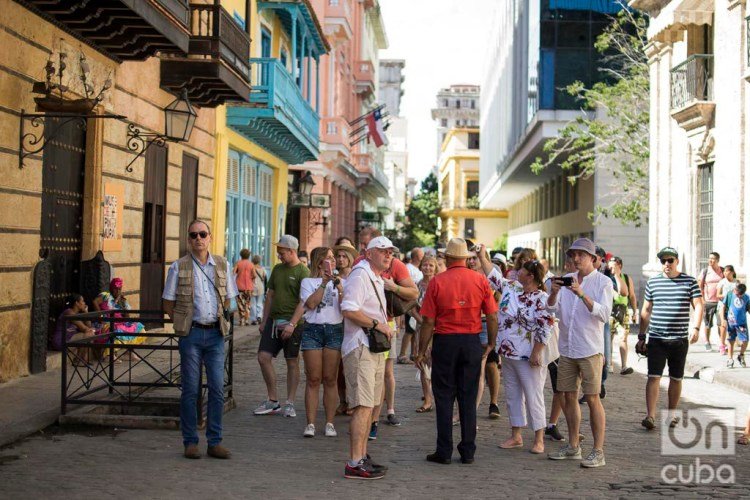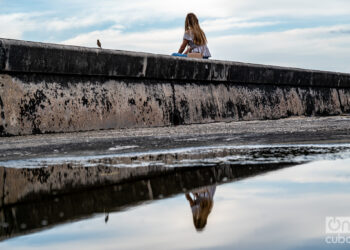Recently, the National Statistics Bureau of Cuba (ONE) announced that, preliminarily, the country received 4,275,558 tourists in 2019, which represented a 9.3% drop in relation to 2018. This result reaffirms a slowing-down trend in tourism that started being verified in 2018 when the number of tourists received barely grew 1.2% compared to 2017.
The Cuban authorities, as well as various academic media, have focused on the decrease of American tourists, the result of punitive measures established against Cuba by the administration of Donald Trump, as the reason that explains the previous trend. According to these preliminary data, the number of U.S. visitors totaled 498,067, for a decrease of 22% compared to 2018.
It is indisputable that based on the thaw in relations between the United States and Cuba, under the administrations of Obama and Raúl Castro, respectively, the visits of American tourists to the island increased significantly. Although before 2014 the number of such visitors barely reached 100,000, by 2018 they accounted for 638,000, making the United States the second largest market, behind Canada. A similar boost was the segment of emigrated Cubans, who that same year reflected a figure of just over 600,000 visitors, for a 66% increase compared to 2014.
Notwithstanding the above, and without forgetting the importance that American tourism represented and represents for Cuba since 2015, the responsibility of that market has been recently oversized in the results exhibited by the smokeless industry.
To put it in its proper perspective: the massive influx of visitors from the northern neighbor in recent years, which caused a greater dynamism in the growth of tourist arrivals, helped Cuba to reach the record number of 4.7 million visitors much faster, encouraging the perception that the island could reach 5 million by 2019.
I did an analysis of the performance Cuban tourism would have had without taking into account the extraordinary growth in the number of American tourists. We assume that there were no flexibilities in trips to Cuba and, therefore, the flow of visitors from the northern neighbor remained at the figure of 100,000 visitors per year (somewhat higher than what Cuba received before 2014) and considering the results obtained in the other markets (including the segment of Cuban emigrants). The result was that between 2015 and 2019 the number of tourists would have grown at an average annual rate of 5.3%, even closing the year 2019 with growth: the figure for that year would have been 3,877,491 visitors, 4% higher than the previous year. The average growth for the period that was obtained with the simulation is higher than the one shown with the real data of the U.S. tourists and which was an annual average of 4.9%.
The simulation revealed several conclusions:
1) The goal of the 5 million tourists would take a little longer to be achieved, but tourism on the island would have maintained its steady growth even without the extraordinary contribution of the U.S. market.
2) The participation of traditional markets has continued to play a role in the performance of the sector, despite the fact that the Canadian market has slowed its dynamism.
3) The emergence of other non-traditional markets, such as Russia and China, have contributed to the growth of tourism on the island. It should be noted that Russia has become the third issuing market, surpassing the other European countries.
But the most relevant conclusion is that tourism in Cuba should not continue to develop based on what the U.S. market could contribute. As it has been experienced in the last five years, there will be no stable flow of tourists from the United States as long as there is no normalization of relations between the two countries and that possibility has no fixed date for its realization.
On the contrary, the priority that the Cuban authorities must assume in their analysis based on the statistics provided by the ONE is to focus attention on those factors on which Cuba may have some impact and that are hampering the growth and efficiency of the sector. They are:
- To analyze why the growth of Canadian tourists has slowed. Between 2019 and 2014 it has decreased by 5%.
- The fall in the level of use of hotel capacities. For 2018, this use did not reach 50%, but even in the years of the resurgence of the U.S. market, the figure ranged between 50% and 60%, while the average in the Caribbean was 70%.
- The decrease in the average number of days that tourists stay. While in 2005 that indicator reflected a value of 8.7 days, in 2018 it was 6.6 days.
- Worrying drop in the amount of income by tourists. In 2005 it was 1,035 USD and in 2018 it was 616 USD.
* This text was originally published under the title “Resultados y realidades del turismo en Cuba” reproduced with the express authorization of its author.











